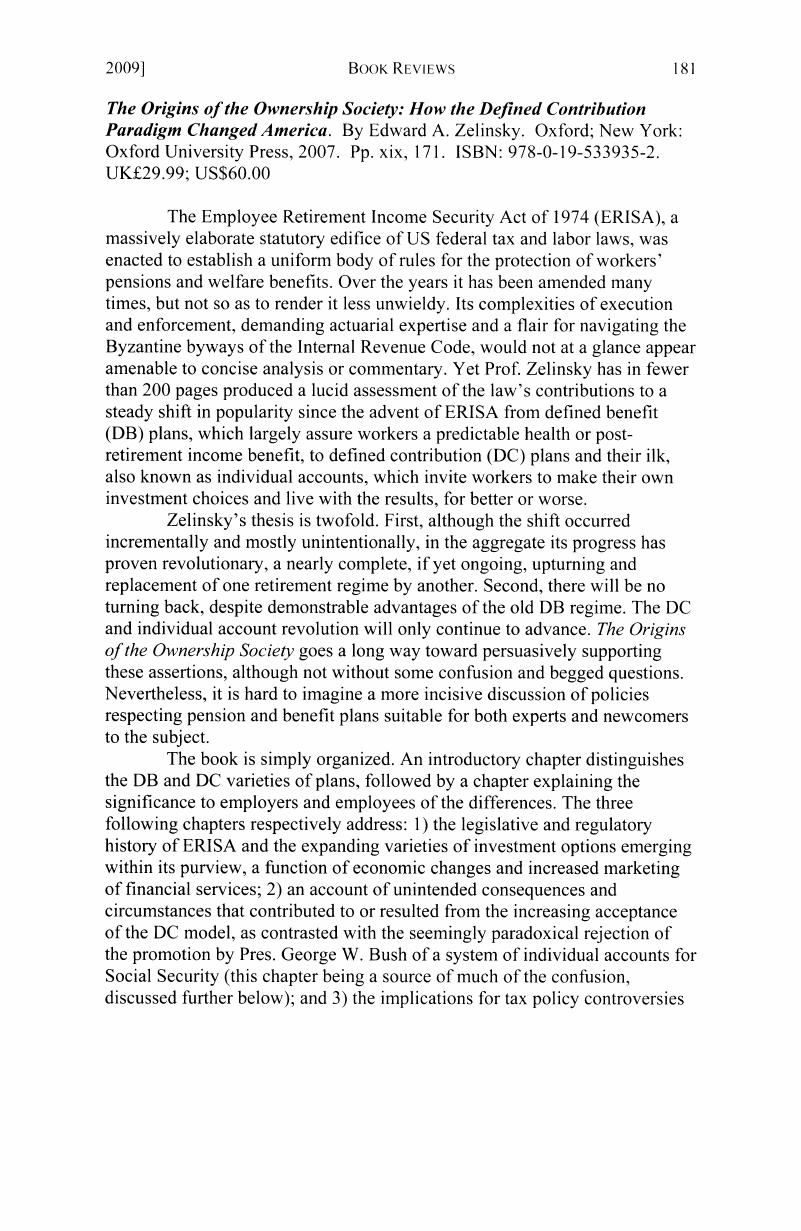No CrossRef data available.
Published online by Cambridge University Press: 28 February 2019

19 Berkeley: University of California Press, 2004.Google Scholar
20 Zelinsky also recognizes that the capacity to realize these values may correlate to class:Google Scholar
[T]he United States always has been an ownership society. The defined contribution paradigm is a new, important but by no means inevitable chapter in the story, expanding the portfolios of middle-class and upper-middle class households from their homes to the financial instruments such households own via their 401(k), IRA, 529 and other individual accounts. (p.100)Google Scholar
21 Kohut, Andrew & Stokes, Bruce, America Against the World: How We Are Different And Why We Are Disliked (New York: Times Books, 2006) 53.Google Scholar
22 Zelinsky explicitly approves a tempered paternalism in the context of individual accounts, arguing that “there is room for improving the retirement savings choices of many people if the rules are formulated and implemented with reasonable care and subtlety.” (p.148) The implication, of course, is that DB plans exemplify a “heavy-handed paternalism” the rejection of which spurred the acceptance of DC plans by individual investors. (pp. 147–48)Google Scholar
23 Still starker irony occurs incidentally in a footnote in which Zelinsky refers to General Motors as being among “a growing number of major corporations… offering HSA-linked insurance plans to employees” in mid-2006. (p83, n.155) (quoting Sarah Rubenstein, A Hitch on Health Insurance, Wall St. J., June 10–11, 2006, at B4) (emphasis added). By the end of March 2009, the New York Times was reporting the company's CEO's concern “that bankruptcy was ‘more probable’ than ever for the automaker.” Nick Bunkley, Bankruptcy Is Now ‘More Probable,’ New G.M. Chief Says, N.Y. Times, Mar. 31, 2009, at http://www.nytimes.com/2009/04/01/business/01auto.html.Google Scholar
24 A GAO report of a survey of 44 of the nation's largest DB plan sponsors published in late March 2009 “was largely completed prior to the current financial market difficulties of late 2008.” However, it speculates that “the long-time stability of larger DB plans is now vulnerable to the broader trends of eroding retirement security. The current market turmoil appears likely to exacerbate this trend.” U.S. Gov't Accountability Off., Rep. Cong. Requesters GAO-09-291, Defined Benefit Pension: Survey Results of the Nation's Largest Private Defined Benefit Pensions [i] (Mar. 30, 2009), available at http://www.gao.gov/new.items/d09291.pdf.Google Scholar
25 And “[t]inkering at the margins will not rejuvenate the now-stagnant defined benefit system …” (162).Google Scholar